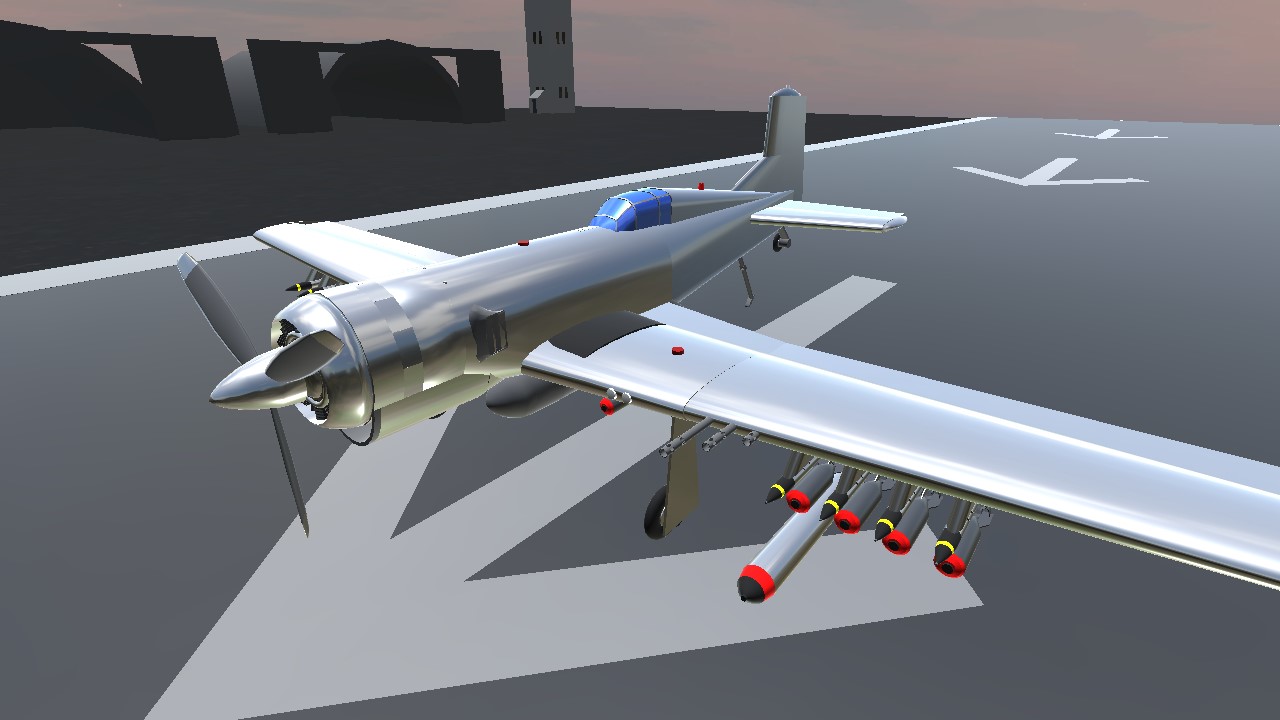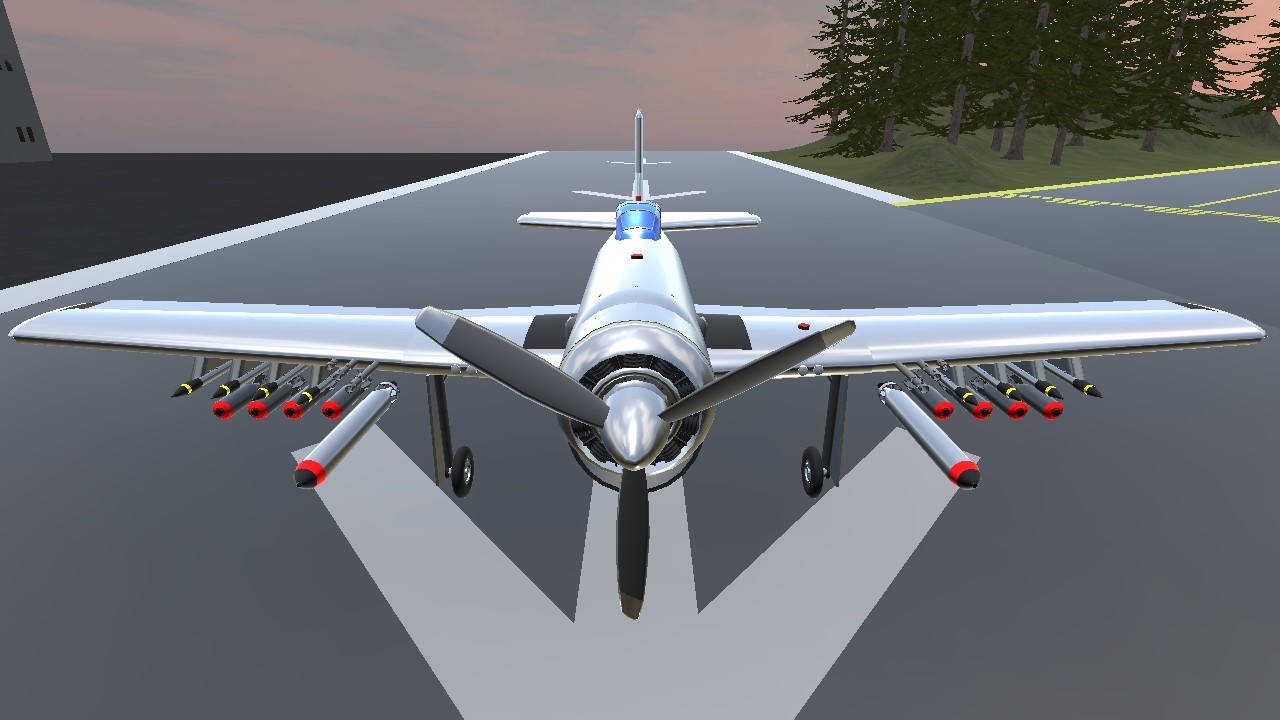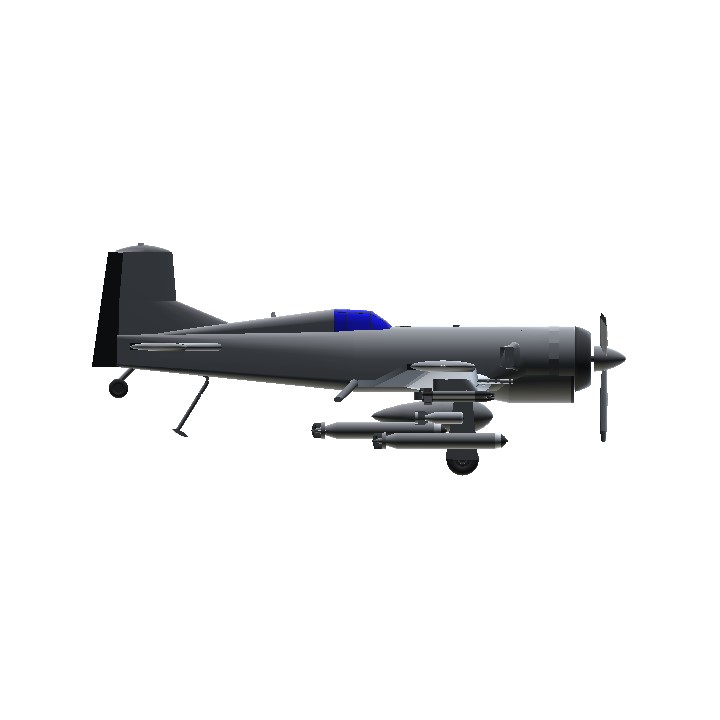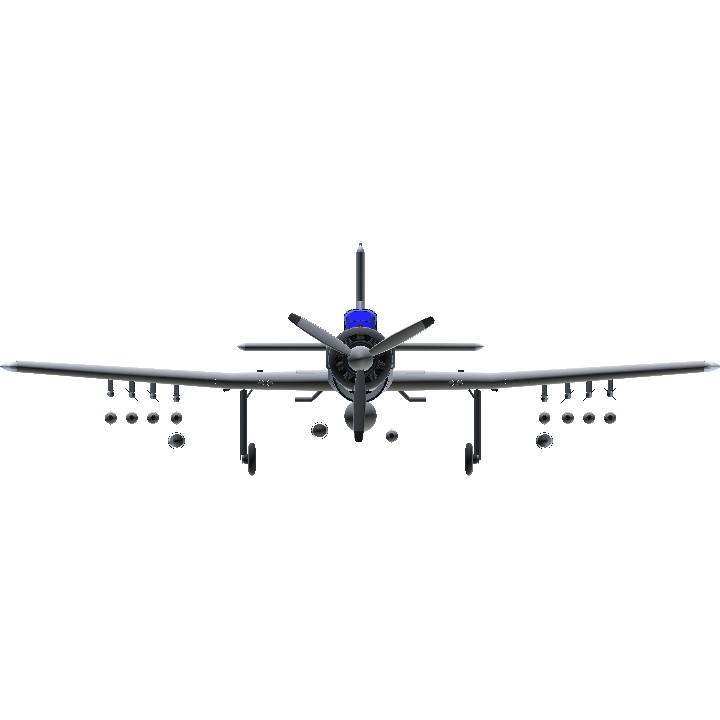P6A Merlin, first flown in 1939.
Let me introduce, the P6 Merlin! The fighter was a huge feat for Pavelania, considering them being a small country, yet being able to produce advanced fighters (for the time) such as the P6, which was on the exact same level as the F4U, F4F, P-51, etc. Nicknamed the "Pavelanian Corsair" because of it's many traits that make it very similar to the Vought F4U Corsair. While the P6 was designed around the Pavelanian Naval Aviation requirements, it was used in the Air Force as well. It is powered by a monstrous P&W R-2800 Double Wasp, pushing out more than 2,600 HP. The P6 also features folding wings, ease of maintenance in mind, and hard-hitting firepower: Six M2 Browning .50 Cal machine guns.
However the P6 wasn't without it's serious flaws. The P6 was notorious for being difficult to fly, and required a skilled pilot with hands on the stick and feet on the pedals at all times. The P6 was a terrible energy fighter and quickly lost energy in high-G manuevers, thus requiring the powerful R-2800. Thankfully, it did have quick acceleration. Another flaw was that the massive R-2800 on a small light airframe produced huge amounts of torque and was EXTREMELY difficult to take-off and land. Thus the reason many pilots compared it to the F4U. The P6's saving grace was it's powerful engine, high speed, long-endurance WEP, high-roll rate and moderate to high manuevearbility at high rates of speed, and it's hard hitting .50 cal guns. Another lacking feature was it did lack in range quite a bit, even with external fuel tanks. Strangely, while the P6 is a fighter, it can carry up to 3 torpedoes, making it a "crude" torpedo bomber. The P6 could also be considered a "strike fighter".
The P6 overall was feared greatly by it's enemies, and by it's pilots. It proved successful during the 40's period of the North Atlantic War and was a major feat for Pavelania as a fighter. Lessons learnt from the P6 carried over to make even better fighters by PAC.
Produced from 1941 to 1952.
HOW TO PERFORM A "CARRIER LANDING":
Drop flaps to full, press G to extend the landing gear, which also drops the tailhook, and keep prop pitch at max for max power. It's a good idea to keep WEP on standby by pressing AG-1 incase of a go-around. Keep your speed high on approach (between 130-115 MPH), don't fly too low, or too high, and right before touching down, reduce power, pull the stick aft all the way back, and at the same time press either AG-3, 4 or 5 to activ vate the drag chutes (as if you caught a wire in the trapping). If you landed safely, immediately discard the parachute by deactivating which ever parachute activation group you selected (either 3, 4 or 5.). Really hard to nail, but it's the closest I could get to simulating a real carrier trapping.
Enjoy and happy flying!
Many neat features on this plane, but it's very hard to fly, let alone dogfight. Very pleased with the WEP feature and folding wing. Tailhook came out OK, but it sometimes might not fully stick to the fuselage. I also added a whole array of weapons for you guys to customize the loadouts of the plane. Overall it's my first high-performance fighter with lots of new features, and many more like it are to come. Hope you guys enjoy this and I'd appreciate some feedback on things I could improve for my next fighter. Enjoy!
G = Landing Gear/Tailhook
AG-1+MAX THROTTLE = WEP (War Emergency Power)
AG-2 = Drop Center External Fuel Tank (If Equipped)
AG-3 = First Parachute set for carrier landings
AG-4 = Second Parachute set for carrier landings
AG-5 = Third Parachute set for carrier landings
AG-6+TRIM UP = Fold Wings, vise versa to unfold.
AG-7 = Landing Lights
AG-8 = Nav, Beacon, Strobe Lights
VTOL Slider = Constant Speed Prop
Trim Slider = Flaps (Trim Slider Down for Extending Flaps, Vice Versa for retracting Flaps)
Specifications
Spotlights
- jamesPLANESii 7.5 years ago
- Sgtk 7.5 years ago
General Characteristics
- Successors 3 airplane(s)
- Created On Windows
- Wingspan 36.2ft (11.0m)
- Length 26.7ft (8.1m)
- Height 11.6ft (3.5m)
- Empty Weight 4,338lbs (1,967kg)
- Loaded Weight 7,406lbs (3,359kg)
Performance
- Power/Weight Ratio 3.641
- Horse Power/Weight Ratio 0.378
- Wing Loading 35.9lbs/ft2 (175.4kg/m2)
- Wing Area 206.1ft2 (19.1m2)
- Drag Points 4877
Parts
- Number of Parts 108
- Control Surfaces 9
- Performance Cost 872







If you look in the successor's page for this plane, I made a vastly improved Super Merlin just FYI.
@JohnnyBoythePilot np!
@JohnnyBoythePilot Awesome plane, you got a follow from me
@ForeverPie
@TheOwlAce
Thank you!
@JohnnyBoythePilot You're welcome!!
@Nate46
Thanks man!
@Feanor
@rubbishcraft
@QingyuZhou
@Mostly
@DemonSniper8
@Pianoman
Thank you guys all for the upvotes!
@Sgtk
Thanks for the upvote & spotlight Sgtk!
@SSSvaSSa
Thanks for the upvote!
Np! @JohnnyBoythePilot
@jamesPLANESii
Wow that didn't take long. lol Thanks man!